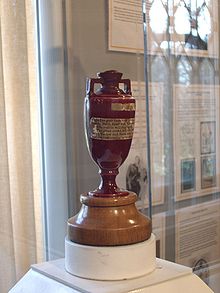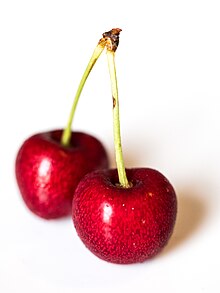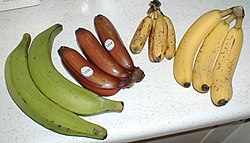Template:Transclude random excerpt/testcases
| This is the template test cases page for the sandbox of Template:Transclude random excerpt. to update the examples. If there are many examples of a complicated template, later ones may break due to limits in MediaWiki; see the HTML comment "NewPP limit report" in the rendered page. You can also use Special:ExpandTemplates to examine the results of template uses. You can test how this page looks in the different skins and parsers with these links: |
Random cricket article from list[edit]
If it's always Cricket bat, be suspicious!
| {{Transclude random excerpt}} | {{Transclude random excerpt/sandbox}} |
|---|---|
 |
 |
Random article from a list that's mainly rubbish[edit]
Should always be Cat or Dog
| {{Transclude random excerpt}} | {{Transclude random excerpt/sandbox}} |
|---|---|
|
The cat (Felis catus), commonly referred to as the domestic cat or house cat, is a small domesticated carnivorous mammal. It is the only domesticated species of the family Felidae. Recent advances in archaeology and genetics have shown that the domestication of the cat occurred in the Near East around 7500 BC. It is commonly kept as a house pet and farm cat, but also ranges freely as a feral cat avoiding human contact. It is valued by humans for companionship and its ability to kill vermin. Its retractable claws are adapted to killing small prey like mice and rats. It has a strong, flexible body, quick reflexes, sharp teeth, and its night vision and sense of smell are well developed. It is a social species, but a solitary hunter and a crepuscular predator. Cat communication includes vocalizations like meowing, purring, trilling, hissing, growling, and grunting as well as cat body language. It can hear sounds too faint or too high in frequency for human ears, such as those made by small mammals. It secretes and perceives pheromones. Female domestic cats can have kittens from spring to late autumn in temperate zones and throughout the year in equatorial regions, with litter sizes often ranging from two to five kittens. Domestic cats are bred and shown at events as registered pedigreed cats, a hobby known as cat fancy. Animal population control of cats may be achieved by spaying and neutering, but their proliferation and the abandonment of pets has resulted in large numbers of feral cats worldwide, contributing to the extinction of bird, mammal, and reptile species. the domestic cat was the second most popular pet in the United States, with 95.6 million cats owned and around 42 million households owning at least one cat. In the United Kingdom, 26% of adults have a cat, with an estimated population of 10.9 million pet cats there were an estimated 220 million owned and 480 million stray cats in the world. (Full article...) |
The cat (Felis catus), commonly referred to as the domestic cat or house cat, is a small domesticated carnivorous mammal. It is the only domesticated species of the family Felidae. Recent advances in archaeology and genetics have shown that the domestication of the cat occurred in the Near East around 7500 BC. It is commonly kept as a house pet and farm cat, but also ranges freely as a feral cat avoiding human contact. It is valued by humans for companionship and its ability to kill vermin. Its retractable claws are adapted to killing small prey like mice and rats. It has a strong, flexible body, quick reflexes, sharp teeth, and its night vision and sense of smell are well developed. It is a social species, but a solitary hunter and a crepuscular predator. Cat communication includes vocalizations like meowing, purring, trilling, hissing, growling, and grunting as well as cat body language. It can hear sounds too faint or too high in frequency for human ears, such as those made by small mammals. It secretes and perceives pheromones. Female domestic cats can have kittens from spring to late autumn in temperate zones and throughout the year in equatorial regions, with litter sizes often ranging from two to five kittens. Domestic cats are bred and shown at events as registered pedigreed cats, a hobby known as cat fancy. Animal population control of cats may be achieved by spaying and neutering, but their proliferation and the abandonment of pets has resulted in large numbers of feral cats worldwide, contributing to the extinction of bird, mammal, and reptile species. the domestic cat was the second most popular pet in the United States, with 95.6 million cats owned and around 42 million households owning at least one cat. In the United Kingdom, 26% of adults have a cat, with an estimated population of 10.9 million pet cats there were an estimated 220 million owned and 480 million stray cats in the world. (Full article...) |
Random article from a list that's totally rubbish[edit]
Error: no valid article
| {{Transclude random excerpt}} | {{Transclude random excerpt/sandbox}} |
|---|---|
|
Excerpt error: No valid pages found |
Excerpt error: No valid pages found |
All articles[edit]
| {{Transclude random excerpt}} | {{Transclude random excerpt/sandbox}} |
|---|---|
|
An apple is a round, edible fruit produced by an apple tree (Malus spp., among them the domestic or orchard apple; Malus domestica). Apple trees are cultivated worldwide and are the most widely grown species in the genus Malus. The tree originated in Central Asia, where its wild ancestor, Malus sieversii, is still found. Apples have been grown for thousands of years in Eurasia and were introduced to North America by European colonists. Apples have religious and mythological significance in many cultures, including Norse, Greek, and European Christian tradition. (Full article...) A banana is an elongated, edible fruit – botanically a berry – produced by several kinds of large herbaceous flowering plants in the genus Musa. In some countries, cooking bananas are called plantains, distinguishing them from dessert bananas. The fruit is variable in size, color, and firmness, but is usually elongated and curved, with soft flesh rich in starch covered with a rind, which may have a variety of colors when ripe. The fruits grow upward in clusters near the top of the plant. Almost all modern edible seedless (parthenocarp) bananas come from two wild species – Musa acuminata and Musa balbisiana. Most cultivated bananas are M. acuminata, M. balbisiana, or hybrids of the two. (Full article...)  |
An apple is a round, edible fruit produced by an apple tree (Malus spp., among them the domestic or orchard apple; Malus domestica). Apple trees are cultivated worldwide and are the most widely grown species in the genus Malus. The tree originated in Central Asia, where its wild ancestor, Malus sieversii, is still found. Apples have been grown for thousands of years in Eurasia and were introduced to North America by European colonists. Apples have religious and mythological significance in many cultures, including Norse, Greek, and European Christian tradition. (Full article...) A banana is an elongated, edible fruit – botanically a berry – produced by several kinds of large herbaceous flowering plants in the genus Musa. In some countries, cooking bananas are called plantains, distinguishing them from dessert bananas. The fruit is variable in size, color, and firmness, but is usually elongated and curved, with soft flesh rich in starch covered with a rind, which may have a variety of colors when ripe. The fruits grow upward in clusters near the top of the plant. Almost all modern edible seedless (parthenocarp) bananas come from two wild species – Musa acuminata and Musa balbisiana. Most cultivated bananas are M. acuminata, M. balbisiana, or hybrids of the two. (Full article...)  |
Template in image caption not processed correctly[edit]
Caption should be:
Right to left:
- The Capture of the 'Nuestra Señora de Covadonga' (20 April 1743)
- The Battle of Fontenoy (11 May 1745)
- The Battle of Hohenfriedberg (4 June 1745)
- The Siege of Bergen op Zoom (14 July – 18 September 1747)
Actual caption shows asterisks:
| {{Transclude random excerpt}} | {{Transclude random excerpt/sandbox}} |
|---|---|
|
The War of the Austrian Succession was a European conflict fought between 1740 and 1748, primarily in Central Europe, the Austrian Netherlands, Italy, the Atlantic Ocean and Mediterranean Sea. Related conflicts include King George's War in North America, the War of Jenkins' Ear, the First Carnatic War, and the First and Second Silesian Wars. Its pretext was the right of Maria Theresa to succeed her father, Emperor Charles VI, as ruler of the Habsburg monarchy. France, Prussia, and Bavaria saw it as an opportunity to challenge Habsburg power, while Maria Theresa was backed by Britain, the Dutch Republic, and Hanover, collectively known as the Pragmatic Allies. As the conflict widened, it drew in other participants, among them Spain, Sardinia, Saxony, Sweden, and Russia. (Full article...) |
The War of the Austrian Succession was a European conflict fought between 1740 and 1748, primarily in Central Europe, the Austrian Netherlands, Italy, the Atlantic Ocean and Mediterranean Sea. Related conflicts include King George's War in North America, the War of Jenkins' Ear, the First Carnatic War, and the First and Second Silesian Wars. Its pretext was the right of Maria Theresa to succeed her father, Emperor Charles VI, as ruler of the Habsburg monarchy. France, Prussia, and Bavaria saw it as an opportunity to challenge Habsburg power, while Maria Theresa was backed by Britain, the Dutch Republic, and Hanover, collectively known as the Pragmatic Allies. As the conflict widened, it drew in other participants, among them Spain, Sardinia, Saxony, Sweden, and Russia. (Full article...) |
Another image caption problem[edit]
Image caption should be:
Administrative Siberian Federal District
Geographic Siberia
North Asia, greatest extent of Siberia
Actual caption does not display:
| {{Transclude random excerpt}} | {{Transclude random excerpt/sandbox}} |
|---|---|
 |
 |
List[edit]
Show a list
| {{Transclude random excerpt}} | {{Transclude random excerpt/sandbox}} | ||||
|---|---|---|---|---|---|

|

|
References[edit]
This section contains references and notes. It should be empty. If anything appears here then a template may need to be removed from the transcluded article.



